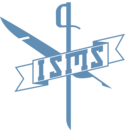Working Groups
In 2018, the Council considered the use of the term "Working Groups" and noted that these divisions had become primarily a structure for organizing the annual conference rather than a framework for working on particular problems or issues of interest to the member institutions. The alternatives "topics" or "thematic areas" were proposed, with "teams" forming to address specific pieces of work, such as research projects, special journal issues, or book projects. The Handbook of Military Sciences has adopted a structure of section editors to meet the publication deadlines.
Providing updates to the working group pages is the responsibility of the working group chairs.
For the upcoming ISMS Conference 2024 in Stockholm the Working Group Chairs will be joined by co-chairs, please see each Working Group for more information.
What do Working Group Chairs do?
Over the years, Working Group Chairs have played a variety of roles in the Society, both passive, and more active. These include conference support, steering publications, and linking the Society to other professional networks.
Conference support. The Chair of the annual conference typically sends abstracts to the appropriate Working Group Chair, who screens them for quality and organizes them into panels to help the conference organizers. It is usually the conference chair who sends out the letter of acceptance, on the advice of the working group chairs. Working Group Chairs may also help find facilitators or discussants for panels, or do it themselves.
Steering publications. One for the reasons for grouping papers in panels is to help develop them for publication by comments and feedback. Chairs can play a more active role by soliciting papers along thematic lines, and looking for journal editors who are interested in special issues, or they might serve as editors for volumes of collected papers. We think in the future, special issues or collected volumes might be useful to support member institution curriculums. This takes planning over several years, and linking together demand for certain kinds of collections, and researchers who are working in those areas.
Linking and networking. Along the lines of steering publications, Chairs might help individuals find the right journals or publication outlet for their work, and they might help member institutions find researchers or subject experts through networks that extend beyond ISMS.
Working Group Chairs are self-tasked, and so no-one really tells them what to do. There's a range of possible opportunities, and the conference committee picks up anything that the working group chairs don't do, including assigning local "sherpas" for each panel to keep the conference on track. But if the Working Groups are to do "work" outside the conference, it really depends on the Working Group Chairs. If you have questions, please contact your Council member, or the Secretary
Military strategy, operational art and tactics, contemporary operations, conflict, future warfare, asymmetrical warfare, psychological operations, peace support ops, COIN, military support for civil authority, doctrine development, military theory and practice, lessons learned and identified, terrorism and counter-terrorism, organized crime, intelligence, military policing, international police operations, regional approaches, privatization of security, special forces.
Chronological, geographical, component (army, navy, air force), thematic, military biography.
Information systems, systems testing, impact of technology on operations, weaponry, interaction with human dimension, R&D agendas, industry connections, life cycles and defence acquisition, network centric warfare and network enabled capabilities.
Sense-making, trust, stress, group cohesion and resilience, case studies, cultural awareness, gender, communication skills, mediation & negotiation, self-reflection, organizational culture, diversity management, temporary units, physical and psychological characteristics, human factors analysis, cognitive abilities, recruitment and selection, education and training, post-traumatic stress, military medicine.
International law of armed conflict, international humanitarian law, rules of engagement, jus in Bello, jus ad bellum, jus pos bellum, status of forces agreements, pre-emptive action, moral dilemmas, values and transmission of values.
International organizations, actors, factors-threats, cooperation, security regimes, alliances and coalitions, interests, risk evaluation and management, international relations, scenario development, crisis management, security complexes, influence strategy, coercion, deterrence, modelling, game theory, defence diplomacy, etc.
Nation-building, institutional gaps, military sociology, armed forces as societies, armed forces in society, civil-military relations, conscription and professional armies, gender-ethnicity-identity and minorities, military families, unions and soldier associations, social experimentation and social activism with armed forces, media, public opinion, democratic control of armed forces, security sector reform, international cooperation, privatization
Resource management, change management, transformation, cost-benefit analysis, logistics, defence acquisition, strategic personnel policy, accounting, defence administration, military industrial complex, measures of effectiveness, benchmarking, outsourcing, privatization, base closures, infrastructure issues.
Curriculum development, pedagogy, standards and evaluation, professional development, academic freedom, case studies/simulations/exercises, professional collegiality in military education.
Strategy is a plan of action or policy intended to achieve an objective. The essence of military strategy is that it is pursued in opposition to at least one sentient adversary.
